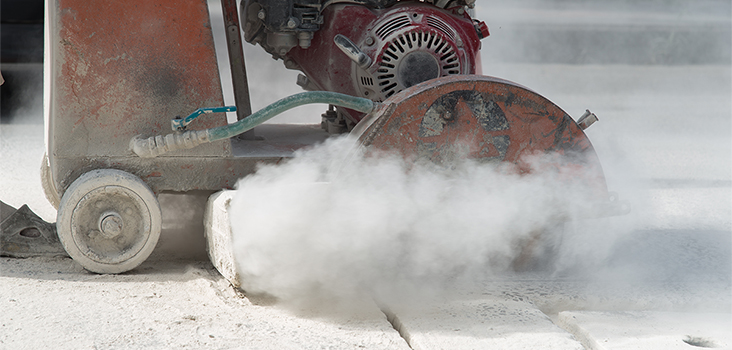
The Three Changes You Need to Make for OSHA's Silica Rule
Employees who frequently work with crystalline silica are at risk of several health hazards and lung diseases, including the incurable silicosis. To protect workers from illness related to respirable crystalline silica, the Occupational Safety and Health Administration (OSHA) issued a final rule to establish a lower permissible exposure limit (PEL) and create new provisions that limit exposure.
These provisions include:
- Requirements for exposure assessment
- Methods for controlling exposure
- Respiratory protection
- Medical surveillance
- Hazard communication
- Recordkeeping
Construction employers should already be complying with these new standards, but other industries still have a few months to comply. Compliance will require some adjustments to current work practices, like hazard controls, training, and medical surveillance. To keep your employees safe and your business in compliance, here are the three main areas to focus your adjustments.
Engineering Controls
Engineering controls are your first line of defense against silica exposure. They include multiple tools to control dust exposure, like water sprays and exhaust fans. The Centers for Disease Control and Prevention (CDC) also offers solutions for heavy silica dust generators, like cut-off saws, jackhammers, and concrete grinders.
Cut-off saws can be controlled with either water to suppress the dust or local exhaust ventilation to capture the dust at its source. With water controls, water is applied to the blade from a portable pressurized tank or hose. The CDC recommends a flow rate of .5 liters of water per minute, as less water isn’t effective and more water doesn’t increase dust control. With local exhaust ventilation, an exhaust hood surrounds the blade and is connected to an industrial vacuum cleaner, capturing the dust at its source.
Silica exposure from jackhammers can be reduced with a water-spray attachment, which the National Institute for Occupational Safety and Health (NIOSH) claims will reduce exposure by 70%-90%.
A NIOSH study found that employees who work with concrete grinders are exposed to 35 to 55 times the silica permissible exposure limit. A local exhaust ventilation system like that used for cut-off saws can significantly reduce exposure.
Administrative Controls
Administrative controls refer to your written exposure control plan, exposure monitoring, and training. They also include safe work practices to follow, like wearing disposable protective equipment and regularly washing equipment and company vehicles.
A written exposure control plan should specifically describe what the company is doing to reduce exposure, including what equipment or work practices have been implemented. OSHA also requires “a description of the procedures used to restrict access to work areas, when necessary, to minimize the number of employees exposed to respirable crystalline silica and their level of exposure, including exposures generated by other employers or sole proprietors.”
Employees and managers should be trained on the risks of silica and how to limit exposure. Training should cover how to properly use and maintain equipment, what personal protective equipment is necessary, and what to avoid in areas where silica dust is present (e.g. eating or drinking).
Medical Surveillance
The new silica rule requires employers to provide medical exams to employees who are regularly exposed to high levels of silica dust. There are different medical surveillance requirements for the construction industry than general industry and maritime.
- For the construction industry, employers must offer medical exams to employees who are required to wear a respirator for 30 or more days per year.
- For general industry and maritime, employers must offer medical exams to employees every three years if they are exposed to silica at or above the action level of 25 µg /m3 over an 8-hour total weight average for 30 or more days per year.
There are also specific requirements for how the exam should be conducted. A silica surveillance exam must:
- Be conducted by a NIOSH-certified technician
- Include a tuberculosis screening
- Include a physical exam, chest x-ray, and fit test (if the employee requires a respirator)
- Offer a written medical report with recommended limitations on exposure
Concentra is doing its part in helping you keep your employees safe and comply with OSHA’s new silica standards. We’re committed to increasing our headcount of NIOSH-certified technicians, and we’re here to help with any of your work health needs. Contact a work health expert if you have any questions about how to comply with the silica rule, and contact your local center if you need to schedule a medical exam or respirator fit test.



